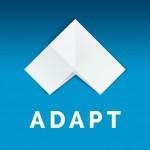Finding time for elearning

Making sure employees have the time for elearning is a challenge. We’re going to give you some practical tips on how to deliver training to staff who are on a tight schedule.
These tips are based on feedback from clients who have faced this challenge. If you’d like to talk about creating an elearning course tailored to your needs get in touch .
Bite-sized learning
Micro learning, or breaking your courses into small pieces, has been popular for a long time. Whilst we’ve been writing about chunking your elearning for a while, there’s a more recent trend for making individual pieces of learning shorter still.
Attention spans are falling and even the best content has to compete with a hundred other options for your employees’ time. Breaking up the learning process can help with tight schedules; fitting elearning in around a busy work routine is easier when it doesn't need a large block of time.
For many industries micro learning can offer a great opportunity for just in time learning ; a staff member takes a small, focused course on a task that they are required to do in the immediate future. With just in time learning, the information is fresh in the learners mind and they have not wasted any time with areas they will not benefit from.
It’s important not to let the quality of the learning suffer when you prioritise short pieces of content, consider these tips when creating your bite sized micro learning:
- Keep it tightly focused – each bite-sized chunk should have one learning objective
- Make it wholly relevant – the learners should be able to focus entirely on the knowledge they need for the current chunk
- Use video – video draws learners in and keeps them interested more than text, so it can help speed up the progress through a short piece of learning
Multi Device
Your employees already access the information they need in many ways, from face to face conversations to external social media sites. The best device for accessing elearning is the one that’s nearest to you, and often it’s no longer a desktop computer.
By making the training accessible from anywhere you can greatly increase the chance of your staff being able to complete the course promptly.
Here are our key tips for the multi device elearning development process:
- Use responsive design principles – building one course which can be viewed on many different screen sizes helps keep costs down whilst ensuring multi device compatibility
- Try a mobile first approach – it doesn’t work for everything but if you get the design right for the smallest devices and work from there, this helps avoid adding unnecessary content
- Optimize for fast loading – the main reason use a mobile device is because it’s faster and easier than a desktop or laptop, make sure your course doesn’t take a long time to load

Adapt
Sponge is one of the founding collaborators on the Adapt project , it offers a framework and tool for producing responsive elearning content.
Manage
Staff can take part in most elearning courses whenever it’s convenient - it’s one of the advantages of online training.
Instead of having to schedule time for all members of a team to be away from work together you can have all the relevant employees taking the same course at different times.
This kind of asynchronous elearning has other benefits, learners can interact with other members of the team who they don’t see in person and offer advice which they can use when it’s their turn for the training.
Managers can help ease the time pressures that elearning presents with some simple steps:
- Book in times for staff to attend training in advance
- Let staff know what’s expected from the training and when it should be happening
- Promote the course to your staff
- Build learning into employee objectives

Sponge University
Sponge has an internal staff development program. By encouraging employees to incorporate training into their objectives, you give them more motivation to complete training on time.
Incentivise the learning - make it fun.
If your staff want to complete the training they will be more likely to find time in their day for it.
Games and gamification are two of the most powerful tools in encouraging participation in online training. These elements can range from cost effective gamification elements that integrate with an existing LMS, all the way to fully-fledged games with high scores and leader boards.
Incorporating aspects of social learning can help people invest in the learning process. Staff who are able to act as mentors will be motivated to share their knowledge, and employees who benefit from their more experienced colleagues will feel more included.
Consider these options for motivating your staff by making the learning fun:
- Games – building learning into a game environment increases engagement and helps learners commit to finishing a course
- Social elements can add incentives to staff to help others by sharing knowledge
- A leader board helps promote friendly competition between staff
- Badges can be awarded to staff who accomplish learning goals
If you’d like to know more about how serious games for learning work, download our free guide .
By combining these tips you can make sure your elearning strategy has the best chance of providing staff with the training they need quickly and effectively. If you’d like to talk to us about creating elearning which can fit into your schedule, get in touch.